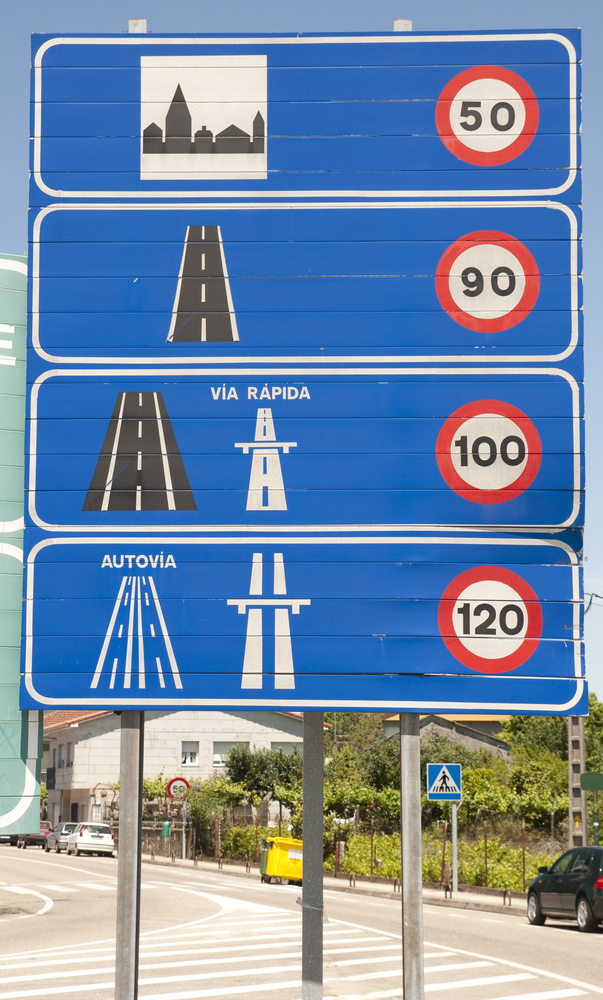Driving in Spain can be a wonderful way to enjoy the glorious European Sunshine. Spain is a very scenic country with so many places to explore; however, there are a few things you need to know before you head off onto the Spanish roads and go explore by car.
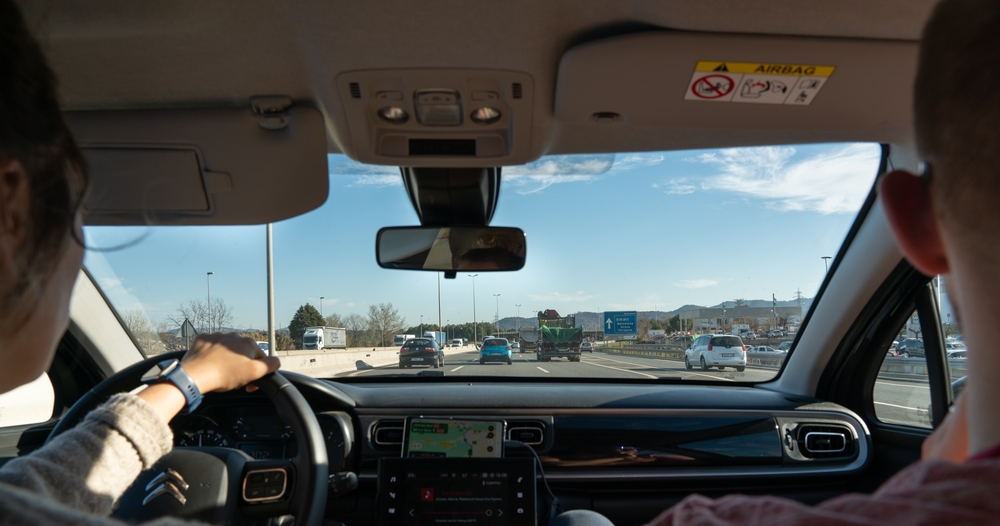
Image Credit: M.Pakats/ Shutterstock.com
Many of the rules and regulations are quite similar to other European countries, with a few minor differences. After reading the guide below, you’ll be ready to hit the road.
Respect The General Road Rules
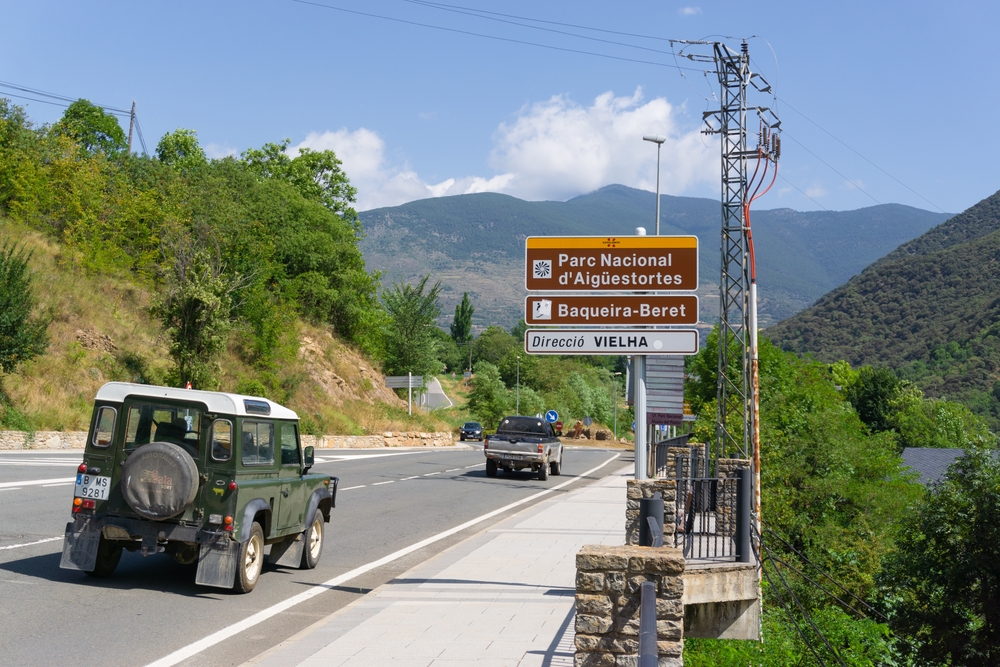
Image Credit: Joan Manel/ Shutterstock.com
Even though driving in Spain is on the same side of the road as in the United States, there are some differences in the driving laws.
• Using a phone or screen-based navigation is not allowed while driving.
• It is a requirement that warning triangles and fluorescent jackets are always kept in the car.
Driving Age – To be able to drive legally, one must be 18 years old and hold a valid driver’s license.
To rent a car in Spain, one must be 21 years old.
Seatbelts – It is a legal requirement that all passengers sitting in the front and back seats of the car, no matter what their age, wear a seatbelt.
Children – Any child under the age of 12 years old, measuring less than 4′ 4.5″ (135 cm), must be seated in a child restraint system fitted explicitly to their height and weight.
Cell Phones – Strictly prohibited while driving!
Blue tooth devices, music players, DVD players, videos, and internet screens are not allowed to be in use in the vehicle.
Screen-based navigation systems are also prohibited while driving.
However, hands-free kits are permitted, but no earpiece attachments are allowed.
Some Serious Rules To Note While Driving In Spain
Alcohol – Drink driving laws are stringent in Spain! If caught with a high blood alcohol level, you could face jail time.
Driving while intoxicated is taken very seriously. The blood alcohol limit for drivers is 0.05 percent, and less for drivers with only three years of driving experience, 0.01. The best way to avoid issues with alcohol is to have a designated driver or not drink if you are the only one of age to drive.
Yellow Lines – Your car will be towed if you park next to a yellow line in a residential area.
In Case of Emergency – The emergency services number to dial in Spain is 112. This can be dialed from anywhere in Europe.
Emergency telephones can also be located all along the motorways.
Overtaking and Turns – you are not allowed to pass while in the right lane. Use the left lane only if you are going to pass and return to the right lane when it is safe to do so. Unless otherwise noted, you may not turn right on red.
Light Bulbs – If any light bulbs go out while using any car hire or in your private vehicle, you must replace those bulbs immediately.
Snow Chains – You should carry snow chains if you head towards a winter mountain resort. The police can stop you from traveling if you do not have chains when the roads are hazardous.
Recommended Reading
15 Cheapest Cities in Europe that You Need to Visit
Speed Limits
If you are familiar with driving in Europe, it is good to know many of the rules are similar from country to country. However, speed limits can be different.
The speed limits are generally valid, and signs will be posted throughout the roadways. You should know if there is snow, fog, or rain with visibility under 164 feet (50 meters), then you need to drive 30 mph (50 km/hr).
- Speed limits within cities: 30 mph (50 km/h)
- Speed limits outside city limits: 43 to 62 mph (70 – 100 km/h)
- Speed limits on Highways: 56-75 mph (90 – 120 km/h)
Carretera Locale or Via Urbana are considered towns, villages, cities, and other built-up areas. These are the speed limits within cities, which are all clearly marked. It is rare, but some city areas may see limits up to 50 km/h.
Autopista or a motorway is the highway speed limits, which are again clearly posted. Many of these motorways can be toll roads.
Autovia or dual carriageways will have varying speed limits from 50 to 62 mph (80 – 110 km/h).
Carretera Nacional (N or CN) are main roads with varying speed limits of 31 to 62 mph (50 – 100 km/h).
All roadways will be clearly marked to help prevent any issues with speeding.
Car Rentals When Driving In Spain
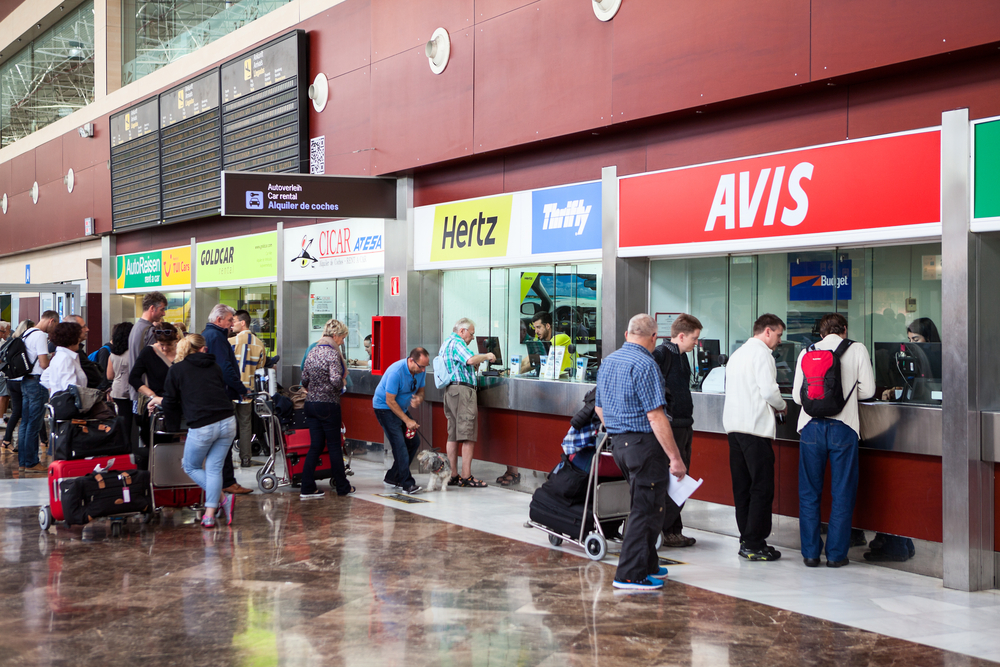
Image Credit: Kekyalyaynen/ Shutterstock.com
Hiring a car in Spain requires a valid driver’s license that the rental car company recognizes. This will be a license that is recognized within the European Economic Community (EEC).
In addition, you must be at least 21 years of age, and there is often a limit of 70 years of age. You should check with any rental car company to see what their policies are before you book the car.
It is possible to pre-book vehicles online before you arrive in Spain. If you use an online service, check that the car cost covers the insurance and that the insurance provided is enough for the minimum requirements.
You should have fully comprehensive insurance, “with or without excess” or sign a waiver that you are responsible for additional payments beyond the insurance.
Therefore, you’ll want to make sure your car hire cost covers this, to avoid any unpleasant surprises, in the event of an accident occurring.
You want to ensure the insurance package covers windows, mirrors, wheels, and other components.
Nowadays, full roadside assistance typically comes standard with policies in Spain and they are provided in English.
When you pick up the car, make sure it has:
- Insurance documents
- Rental contract
- Reflective jacket and approved breakdown triangles
- EEC compliant road accident form
Insurance Requirements When Driving In Spain
Spain requires all drivers to have at least third-party insurance, meaning you must have insurance covering any accident, including the other driver and their passengers.
You may also obtain more insurance, including comprehensive, fire, theft, and extended roadside assistance.
Spain does not require a green card within the EEC.
Recommended Reading
Best time to visit Portugal – Your Complete Guide
Parking
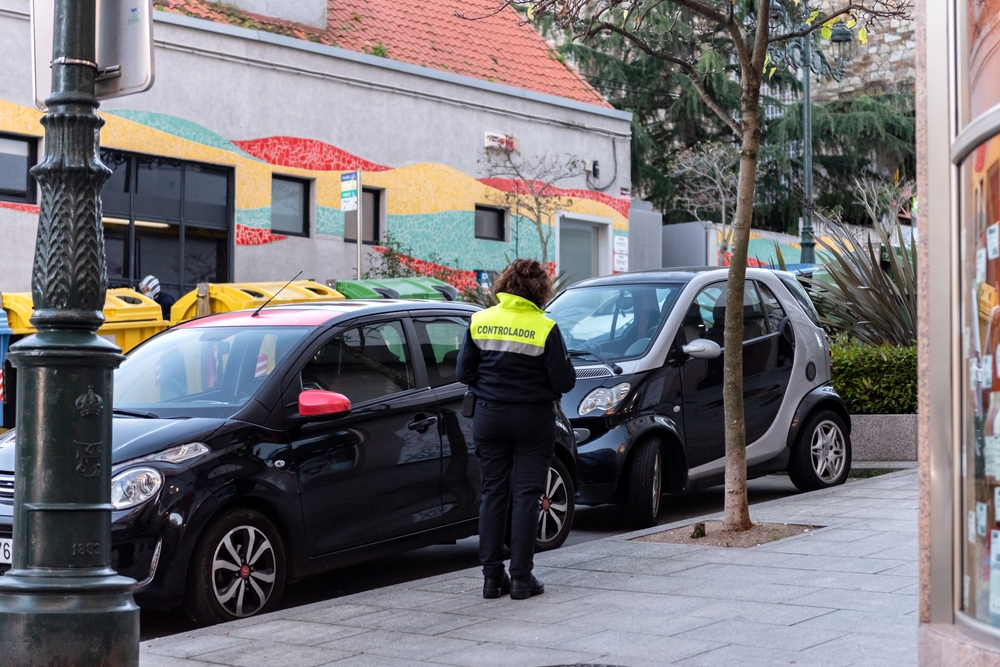
Image Credit: Xan Gasalla/ Shutterstock.com
You may not park within 16 feet of a bend or intersection. Knowing the colors of the parking zones is essential to understanding whether you must pay to park. Paid parking has specific road signs.
Some public parking lots allow overnight parking; however, you may not camp in these parking areas.
Parking in smaller villages can be difficult. Many smaller places have dead-end streets or narrow streets with no parking. Therefore, parking outside the main town and walking into the city is usually advisable.
It is best to park in the same direction as the traffic flow, particularly on one-way streets. Parking is also better if you are on the right-hand side when it is a two-way traffic street.
Driving In Spain – Parking Signs
Parking signs for permitted parking are color-coded.
Blue and Red signs – Say you can only park on one side of the street if it is between the 1st – 15th of the month. You can only park on the other side of the road for the second half of the month, which will have signs marked 16th – 31st.
Black Bands – Resident parking around Spain is marked with black bands, usually on the telephone poles or light posts.
Residents have a permit to park in those spots. Unless you have a resident parking permit on your vehicle, you will not be able to park in these areas.
Working Hour Signs – Some Spanish towns have working hour signs (horas laborables), which also require permits for parking in these zones.
Blue Zones – In towns and cities are the paid parking indicated zones.
Blue ticket machines will be nearby for you to pay for parking.
On Weekday, paid parking is from 9 or 9:30 am until 2 pm, then it starts again from 4 pm to 9 pm.
Saturdays, parking is paid from 9:30 am to 2 pm.
On Sundays and holidays, parking is free.
Parking Costs
Parking costs are usually 1 Euro per hour. Most paid lots have a limit of two hours, so you can park for 30 minutes to two hours. The parking ticket must be displayed in the vehicle so the parking attendant can see it easily.
Any exceeded parking time will get a ticket, which is usually placed in a small envelope on the windshield. Typically, you can cancel the ticket immediately by paying at the ticket machine.
It requires 3 Euros for a new ticket plus the parking fine.
Put the ticket with the parking fine in the envelope and either hand it to an attendant or put it on your windshield. Typically, you must do this within 24 hours, or you will pay at least 40 Euros.
If you are going to be in Spain for more than a few weeks, you can seek a monthly card, which is 15 Euros per month. In addition, many towns and cities are attempting to get more parking, with underground or parking garages.
Gas Stations When Driving In Spain

Image Credit: Lux Blue/ Shutterstock.com
Before driving in Spain, understand the types of roads and where you will find fuel. You do not want to be on country roads that do not offer fuel frequently enough or grab the wrong fuel type.
Fueling is possible in many areas of Spain, from the towns to highway stations.
Cepsa, Repsol, and BP are the major companies with petrol, but you can also find smaller independent stations.
Most fuel stations provide:
- Leaded is known as Super or Super 68
- Unleaded is known as Sin Plomo 98
- Eurosuper 95
- Diesel is known as Gasoleo
The regular fuel is supplied through the green pumps. While, diesel is provided through a black pump.
For electric cars, charger stations are becoming more frequent in Spain. Electromaps is a great user-friendly site to check where the nearest car charger can be found.
Credit cards are accepted at most petrol stations. You should always lock the vehicle when at a fuel pump.
Recommended Reading
12 Most Beautiful Beaches In Spain And Portugal
Law Enforcement – Driving In Spain
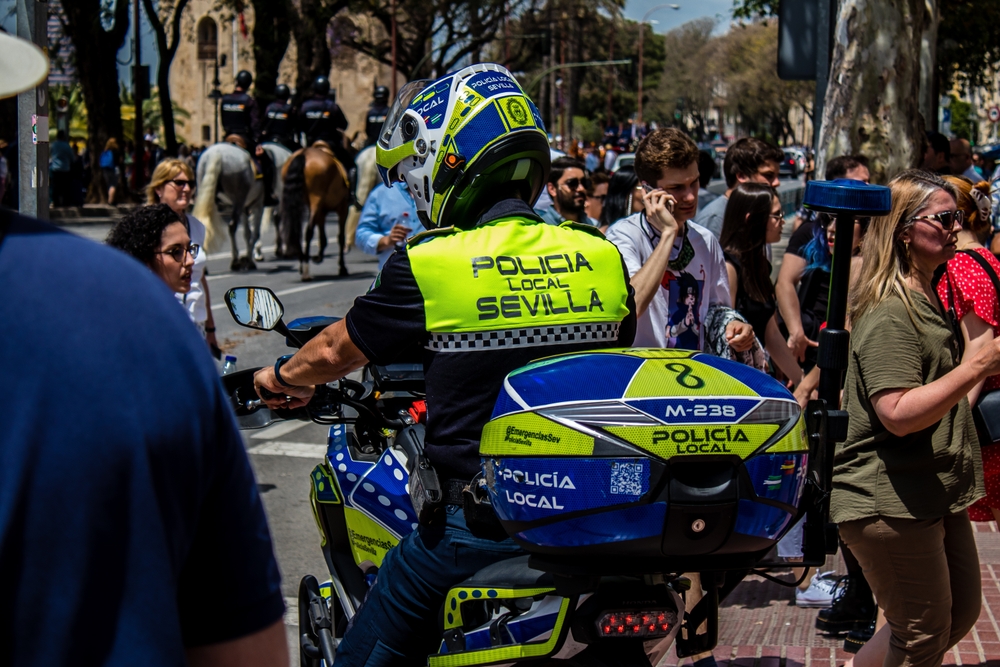
Image Credit: Jose HERNANDEZ Camera 51/ Shutterstock.com
Two types of law enforcement protect the roads. First, the local police maintain the town or city municipal boundaries. At the same time, the Civil Guard is the main police force on the streets and highways.
If you pay attention to the road laws outlined above, you should not encounter the police. Spain is like America, so traffic from the right has the right of way at any stop sign or roundabout.
In Spain, it is the law for any driver to flash their headlights before they overtake you. It is a warning sign that they are about to pass. Intersections where two highways come together usually have roundabouts to make it easier for you to change direction if necessary.
You never cross a solid white line. Wait until the line changes to a broken line before you try to pass anyone. Spanish authorities are stringent in enforcing this law.
Adhere to all the laws, and you will avoid issues while driving in Spain. It is also better to have an international driver’s license, especially if you will be in Spain or other parts of Europe for a lengthy period.
Traffic information is provided on the DGT website, N332 Info map, and UK Michelin’s website. Traffic in Spain is less than in many global cities, although Barcelona is relatively high.
Spanish law enforcement is profoundly severe about ensuring you have all your documents, breakdown equipment, and following road laws. Therefore, before you travel, keep in mind the information provided here to ensure you avoid breaking traffic laws when driving in Spain.
Keep These Items With You In The Car At All Times
You must always have your valid driving license with you or a valid EEC license. Always carry your insurance document.
Driving in Spain requires you to have identification beyond your driver’s license. This can be in the form of a passport, National ID, or resident permit.
Make sure your car hire has the vehicle registration document and that you know where it is. Ensure the car hire has a warning triangle, reflective jacket, GB sticker, and headlamp beam deflectors.
Conclusion
Many road rules are like the US, but some more stringent regulators take driving very seriously.
To enjoy your trip, drive only if you fit the appropriate age limit, do not drink, and have a safe vehicle to travel in.
Keep the information regarding parking signs, what part of the month it is, and other parking regulations in mind when selecting your parking area.
Driving in Spain is enjoyable, with mountainous, seaside, and city routes that will bring you to unique places.
We trust that you will find this guide helpful, so that you can go off and enjoy your next trip driving in Spain.
